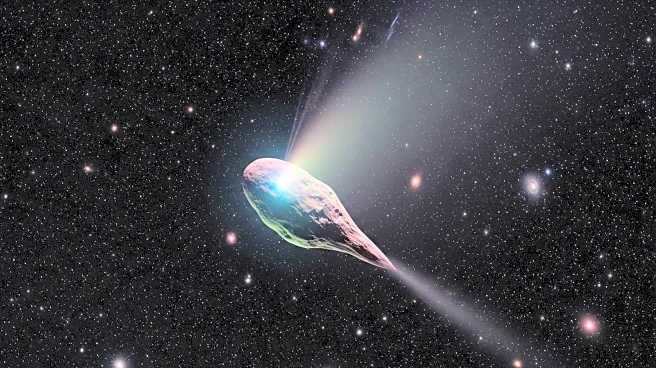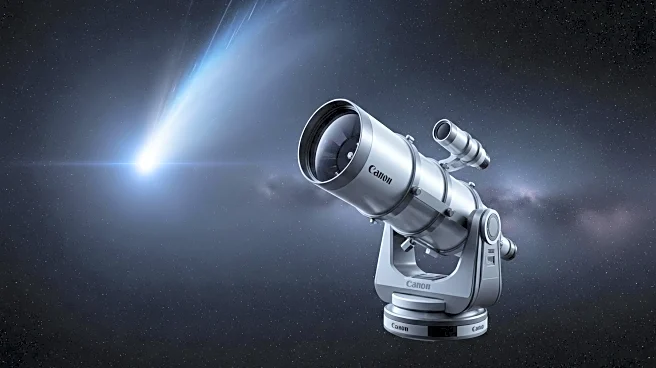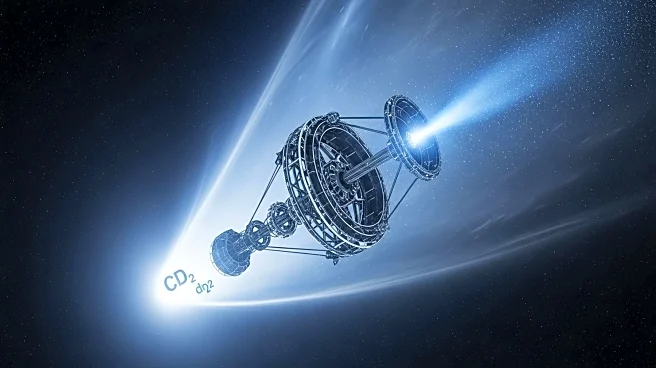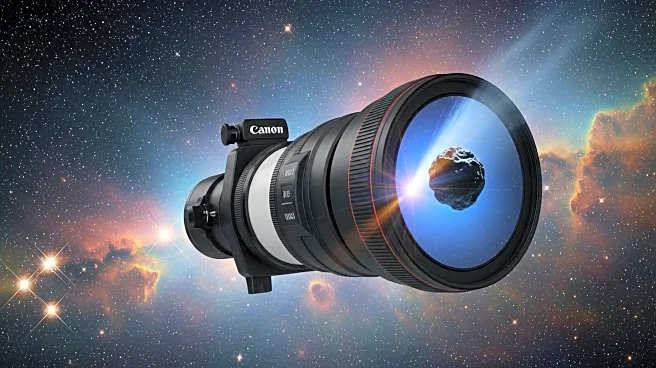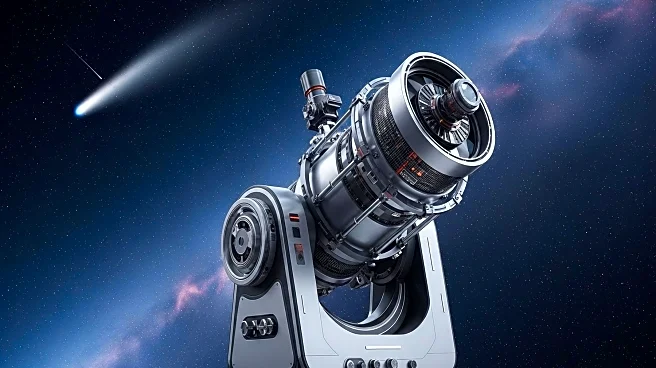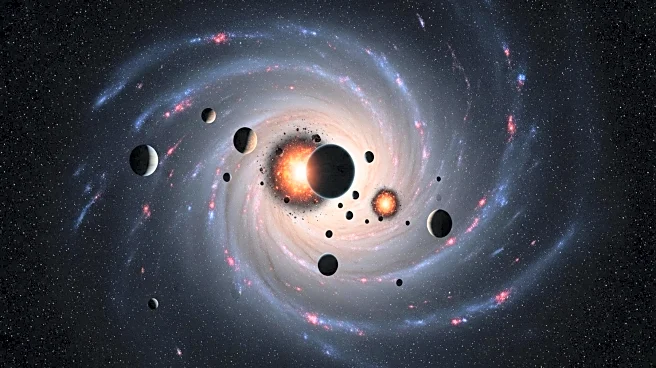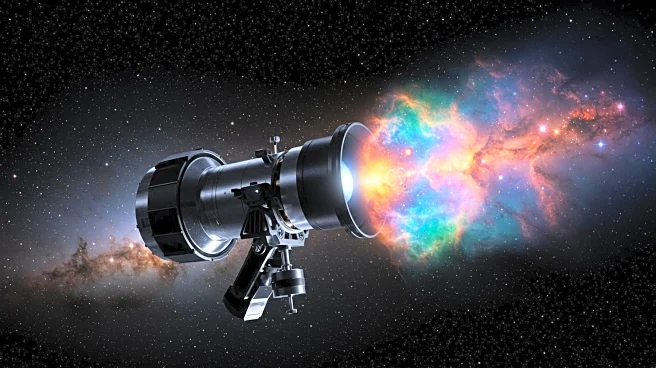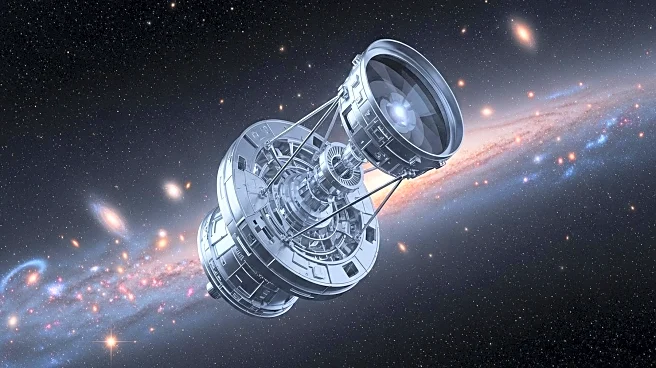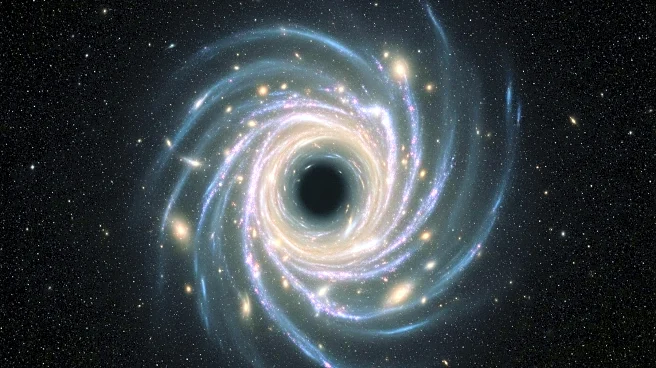What's Happening?
Astronomers have been closely studying the interstellar comet 3I/ATLAS since its discovery in July. Using the James Webb Space Telescope's Near-Infrared Spectroscopic instrument, researchers have measured the composition of the comet's coma, revealing a high concentration of carbon dioxide. This finding suggests that 3I/ATLAS may have formed near the CO2 ice line within its parent star's protoplanetary disk. The comet is believed to be the oldest interstellar comet discovered, potentially older than our solar system.
Why It's Important?
The study of interstellar comets like 3I/ATLAS provides valuable insights into the conditions and processes of distant star systems. Understanding the chemical makeup and formation environment of such comets can help astronomers learn more about the early stages of star system development. The unique characteristics of 3I/ATLAS, including its high carbon dioxide content, offer clues about the radiation levels and environmental conditions in its origin system, contributing to broader astrophysical knowledge.
What's Next?
Astronomers expect 3I/ATLAS to remain observable through mid-2026, allowing for continued research opportunities. As scientists gather more data, they aim to unravel the secrets of the comet's origin and its journey through the galaxy. The ongoing study may lead to new discoveries about interstellar objects and their role in the cosmic landscape.
